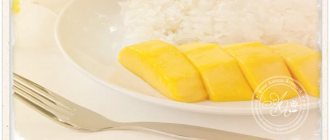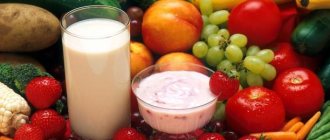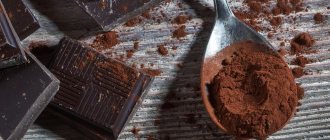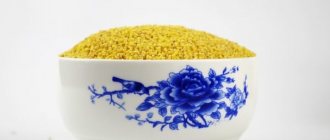The diet implies restrictions, which can cause you to start shaking. The reason for this may be nervous nerves or a feeling of hunger. At this moment you want to eat something forbidden: fast food, fatty foods, several desserts or flour - all this is not part of a strict diet or a healthy lifestyle, but who cares at such moments? What if we assume that the “ban” can become part of a plan to achieve the goal? Fantastic? Not at all, for this you will need a cheat meal and refeed!
Everyone is familiar with the feeling when they start to suck in the pit of their stomach. At such moments it is simply impossible to think about anything other than food. This is evidenced by the hunger that overtakes athletes during drying and losing weight. The nature of the manifestation is episodic, but each time the power becomes greater. You immediately begin to smell your favorite food aromas, and those around you seem to have conspired and are talking only about food.
In fact, there is a method that will make life much easier for those who are dieting and experiencing hunger. Relatively recently, in the context of professional sports and dietetics, people started talking about cheat meals, a nutritional plan proposed by Western experts. With its help, you can powerfully stimulate metabolism, making fat-burning processes more effective. The method is also an excellent way of psychological relief, which will allow you to avoid breakdown even on the most strict diet.
In this article you will learn:
- what is a cheat meal and why is it needed;
- pros and cons of the approach;
- basic cheat meal rules and strategies;
- cheat day, refeed, cheat meal - what's the difference?
- suitable foods for a cheat meal.
What is a cheat meal
The term cheat meal (in English cheat - to cheat, to deceive, to deceive; meal - meal) implies a planned eating disorder during a diet, and literally translated means “a trick with food/eating.”
What it looks like: for several weeks the athlete follows a strict diet, being on a low-carbohydrate diet without the slightest disturbance. A time is planned when it is possible to eat any unhealthy or high-calorie food once a day. It can be pizza, dumplings, cookies with milk, condensed milk with gingerbread, pasta or pies, chocolate, etc., but the time period is limited.
Some athletes stretch out the consumption of junk food throughout the whole day, so a cheat meal turns into a cheat day (what this is is already clear, but the effect on the body will be discussed below).
Unfortunately, not everyone knows what a cheat meal is, and the method is just beginning to become part of the practice of low-carb diets, so many principles and frameworks are quite vague and are interpreted differently. But there is no doubt about its benefits for the body, weight loss and psychological state.
By the way, cheat meals are actively practiced by representatives of Russian bodybuilding - Evgeny Mishin, Denis Burmistrov, Valentina Mishina, etc. Also famous on the Internet are photographs of Dwayne “The Rock” Janson with pancakes or pizza. On her personal Instagram, the star often posts her cheat meal diet.
Why do you need a cheat meal?
When maintaining a diet to lose weight, you need to consume fewer calories than your body uses. The metabolism in the body begins to slow down in order to adapt to life activities within the created volume of energy costs. At the moment when energy reserves from glycogen are depleted, the phase of active slowdown of metabolism begins. So why do you need a cheat meal on a diet?
- Let's summarize the information regarding glycogen: replenishment of reserves is necessary for a full workout, be it strength exercises or cardio exercise. Consequently, more calories will be burned in the process, and the muscles will remain safe. When the supply of carbohydrates in the body is low, the body begins to consume protein from the muscles to maintain the required energy level. At this point, there is a high risk of muscle loss.
- A deficiency of calories and carbohydrates forces the synthesis of thyroid hormones T3 and T4 in smaller quantities, but they are responsible for the level of human metabolism. And a cheat meal becomes necessary, since the benefit is to increase metabolic processes.
- The diet is accompanied by a decrease in the hormone leptin and an increase in ghrelin, which are responsible for the feeling of hunger and satiety with food. Systematic low levels of leptin also slow down metabolic processes, and loading will help stop the negative process.
- With the help of a cheat meal, it is possible to get high spikes in insulin, which will have an anti-catabolic effect - protein breakdown does not occur, muscle mass is not destroyed so much, and even a favorable anabolic environment appears.
- It is especially worth noting the psychological relief, because the stability of the psycho-emotional state affects the absence of breakdowns. A planned violation raises the level of self-discipline on the remaining days of the diet.
Who invented the cheat meal?
One fasting day in a strict diet was invented by professional athletes, whose training requires adherence to a special nutritional system. The cheat meal system allowed them to shift their weight “from a dead point” while losing weight.
The nutrition plan looked like this: 6 days a week strict sports diet, 1 day a week fasting. This is how athletes made up for the lack of carbohydrates in their diet. After all, it is carbohydrates that provide the energy necessary for quality workouts in the gym.
"Pros and cons"
Planned diet violations are considered from two points of view:
| pros | Minuses |
|
|
At a certain point in the diet, metabolism slows down, which leads to low production of the hormone ghrelin - this explains severe hunger pangs. Immediately after a cheat meal, hormone production increases by 30%, which smoothes out further attacks of hunger and controls appetite.
Are cheat meals necessary for a healthy diet?
- If by the concept of “proper nutrition” we mean a balanced diet and its optimal calorie content, then a cheat meal will bring absolutely no benefit to the body. It will not speed up your metabolism, since it already works normally, but will only supply your body with additional calories.
- Eating your usual food during the day, it would be completely wrong to snack on a piece of cake before bed and call it a cheat meal, reassuring yourself that you won’t allow yourself excesses for the next week. The body has already received its norm of calories, and any additional calories will only harm it, without affecting the functioning of leptin in any way.
- Thus, cheat meals and proper nutrition are incompatible things . Rather, it can be called simply overeating, which will result in excess weight gain.
Useful, but not with proper nutrition
How to do a cheat meal correctly
To understand how to do a cheat meal correctly, you should first pay attention to your physical form. The correct algorithm will allow you to cope with the task in full. If the process is organized incorrectly, this can lead to discomfort in the gastrointestinal tract, nausea and vomiting, diarrhea, as well as disruption of the diet. That is why cheat meals must be planned in advance and possible risks taken into account.
To conduct a cheat meal correctly, you must follow a number of rules:
- 1-2 days before a planned diet break, it is better to give preference to cardio training, reducing the consumption of carbohydrates. On the day of loading, it is recommended to do a full-body circuit workout in the gym before starting. This will increase the glycogen depot so that the energy supply from carbohydrates goes to the muscles without being stored in fat;
- It is recommended to practice on diets low in carbohydrates and fats in the diet;
- the number of cheat meals depends on the quality of the form;
- when the diet is long-term, then in order to increase the level of self-control, it is better to carry out such activities at the same time - for breakfast or lunch, on a specific day of the week;
- it is necessary to fit into one meal;
- do not include alcoholic drinks;
- The products consumed should bring pleasure for maximum psychological comfort.
It is worth noting that consuming large amounts of carbohydrates can improve your appearance. For this reason, bodybuilders eat sweets before going on stage to keep their shape as full and voluminous as possible.
Cheat meal and cheat day - which is better?
As part of the diet disorder, the frequency of meals may also vary. It is worth noting that a single meal with a high amount of calories and carbohydrates will have little effect on the level of the hormone leptin. Ideally, it is better to have a cheat day with 2 - 4 meals of similar food in moderate portions, leaving a surplus of the daily calorie intake.
The key difference is the role of the duration of food intake: a single intake of junk food is not able to provoke a sufficient surge in hormones to fully accelerate metabolism. Roughly speaking, the body will not notice this with a prolonged calorie deficit and depleted glycogen reserves. Of course, you can eat 300-500 grams of carbohydrates at once, but it will be more like torture. Let's look at the differences:
| Cheat meal | Chitday |
|
|
Any approach must be chosen according to individual needs and comfort.
How often can you have a cheat meal?
It is critically important to know how often to do a cheat meal, and the basic rule applies here: a small percentage of subcutaneous fat and a low level of leptin (a hormone that is responsible for the feeling of hunger and affects metabolism) allow you to carry out planned violations more often during the diet.
| Men | Women | ||
| Subcutaneous fat percentage | Number of cheat meals per month | Subcutaneous fat percentage | Number of cheat meals per month |
| up to 11% | 3-4 | up to 16% | 3-4 |
| 12-16% | 1-2 | 17-21% | 1-2 |
| from 17% | 1 | from 22% | 1 |
Additional factors affecting frequency:
- general calorie deficit;
- level of physical activity;
- duration, volume and number of training sessions.
The above table is relevant for those who do 3-4 strength training, 2-3 cardio sessions per week.
Another important factor is the calorie deficit formed over the week. Provided that you do not exceed the energy deficit levels created on other days, you can cheat meal without any twinges of conscience.
For example : normal daily calorie content = 2600 kcal; daily caloric intake for weight loss = 2000 kcal. The difference per day is 600 kcal. Within 6 days, a deficit has been created in the amount of: 600 kcal * 6 days = 3600 kcal. On the 7th day, food is consumed for 3600 kcal, which is 1000 kcal above the daily norm. As a result, at the end of the week a deficit was formed: 3600 – 1000 = 2600 kcal
What can you eat
Often, preference is given to fast food or junk food (junk food, which translates as “junk food”, and in common parlance - empty calories), fried, fatty and sweets - these are “forbidden fruits” on a diet. Every person has their own weaknesses.
In fact, a cheat meal (it happens once a week or once a month, it doesn’t matter) also has its own recommendations for choosing products. It is not recommended to use:
- fatty products - fat does not help speed up metabolism and does not affect the hormone leptin, and is not able to replenish glycogen reserves. The only thing he manages to do is settle on the stomach and sides, especially in excess;
- food containing fiber - this element slows down digestion, which is not relevant in the case of a cheat meal. The gastrointestinal tract at this time will already be overloaded due to the volume of food consumed for successful absorption;
- fructose – has no effect on the replenishment of glycogen reserves in muscle and liver cells;
- Protein products also have a slight effect on leptin, so it is better to leave the macronutrient within the daily requirement or reduce it altogether when there is no goal to maintain or increase muscle mass.
The main goal is the stimulation of hormones and the supply of energy for full life and training, and this is possible thanks to the glycogen reserves contained in carbohydrates. The priority is fast carbohydrates with low fat and fiber content, as well as a high glycemic index, since they are the ones that can cause an instant jump in leptin levels. Sample list of products:
- marshmallows and marshmallows without fructose;
- marmalade;
- breakfast cereals coated in sugar;
- bakery products and bread;
- pasta and pizza;
- gingerbread, cookies, sweets;
- pasta;
- White rice;
- potato.
Another important issue is the number of calories in a cheat meal. There are two points of view: some believe that there should be no bans on calories or foods. But on the other hand, overeating can negatively affect the functioning of the gastrointestinal tract and lead to gaining extra pounds, which is undesirable.
A cheat meal is not just a belly celebration, but an event that brings a person closer to their goal.
Cheat meal and cheat day strategies
Any technique goes through the stage of adaptation to a person’s specific lifestyle and individual characteristics. There are several non-standard strategies for organizing carbohydrate loading that differ from the classic scheme, but also work, so you can choose the most suitable tactic for yourself.
- The 90/10 strategy - the ratio consists of 90% of the time on following a strict diet with a deficiency of carbohydrates, and 10% is left to replenish them. For example, 9 days of diet and 1 day of high-calorie carbohydrate food. There is a risk of eating disorders and excess weight gain. The strategy is considered differently: if three meals a day are observed, then 21 meals are obtained in a week. 10% of this figure with rounding is 2 cheat meals per week. Don't forget that a cheat meal is a one-time meal. If the excess weight is more than 5 kg, then nutritionists and trainers do not recommend using this strategy, because between the planned meals of foods prohibited on the diet, the necessary carbohydrate deficit does not have time to form.
- The 80/20 strategy is a lightweight option when loading takes place 4 times a week. It is used for the purpose of weight stabilization, and not for weight loss. Practiced by professional athletes in high-intensity daily training. For a person with a sedentary lifestyle, the scheme is not suitable, since the amount of energy received will significantly exceed its consumption.
- Cheatday – the approach and advantages have already been discussed above. Such a day can really be considered a holiday, but there are still restrictions on the portion of incoming junk food. Most often used in bodybuilding, triathlon and marathon running.
The above strategies are recommended primarily for athletes and people with an active lifestyle.
Do you need a cheat meal while cutting?
Drying refers to the preparatory process of athletes in the pre-competition period in order to reduce the percentage of subcutaneous fat and water in the body. At this stage, athletes adhere to an extremely strict and long-term low-calorie diet, the diet consists mainly of protein foods. Athletes joke at this moment about “how wonderful the world is without carbohydrates.”
This period is associated with high physical and psychological stress, so a cheat meal during cutting becomes a real salvation for athletes, helping to avoid breakdowns. There are concerns in the practice of such approaches due to the psychological barrier associated with the fear of not having time to prepare for the day of the competition or slow down fat burning. However, this is a big misconception, because there are more advantages from a cheat meal than disadvantages.
Harm
- There is a high risk of failure and your cheat meal will turn into a cheat day, and then completely replace all healthy meals. As a result, all the results you managed to achieve will go to waste.
- Carbohydrate loading can contribute to weight gain, but this depends on the body itself and many factors, everything is purely individual. But no one can guarantee you 100% weight loss. If you don’t have minimal physical activity in your life, then the benefits of such a cheat meal will tend to zero.
- Psychological aspect. For some people, a cheat meal helps them follow the rules, but for some people, on the contrary, it breaks their psyche. For example, there is such a disease as eating disorder. People with this problem eat pain, fear, joy, stress. And some, on the contrary, eat exclusively low-calorie foods, carefully avoiding carbohydrates. In this case, the cheat meal will become something like a coveted prohibition - you will think about the treasured chocolate for a whole week, thereby turning it into something forbidden. You will inadvertently make a cult out of food, not allowing yourself to taste all the joys of food. Remember - this day should not be radically different from others. Don’t be afraid of food, don’t put off what you “want” for later. Sometimes, it's better to eat a small piece of a candy bar than to wait a whole week and then pounce on it and eat more than you planned.
- Everyone reacts differently to a cheat meal. While some may benefit from this, others may experience bloating and abdominal discomfort. Once again, look at your body’s reaction and only then draw conclusions!
A cheat meal is just a way to relax, to stop thinking about food as something sacred and forbidden. There is no need to highlight this day in red on the calendar, do not limit yourself completely, thinking only that a reward awaits you soon.
If you feel like your relationship with food is less than ideal, a day like this can only make things worse.
. You may not be able to stop at one piece, and then there will definitely be no point in having a cheat meal. Take it for a test drive: try living like this for a whole week and think - do you really need this cheat meal or is it better not to risk it? It's up to you to decide.
Refeed as a type of carbohydrate loading
The concept of refeed is also found in the field of fitness in the context of reducing subcutaneous fat. Refeed refers to a deliberate violation of the nutrition plan during a diet in the form of increasing the amount of complex carbohydrates consumed and the calorie content of the weight loss diet over several hours or days.
Cheat meals and refeeds have a common purpose regarding psychological relief and benefits for the body during a diet, but the principle of carbohydrate loading itself is fundamentally different. There is also a specific time frame.
| Duration | Number of carbohydrates per 1 kg of pure muscle mass | Features of the event |
| 5 o'clock | 3-6 g | Finish before bed. For example, lasts from 15:00 to 20:00 |
| 1 day | 8-12 g | From breakfast to dinner |
| 2 days | 4-6 g | From breakfast on the first day to dinner on the second day |
The amount of clean or lean muscle mass is determined using body composition analysis - this is the most accurate way. The amount of proteins and fats remains within the previously determined norm.
The frequency of the procedure is also determined based on the initial amount of subcutaneous fat, lifestyle and characteristics of the training process.
The difference between a refeed and a cheat meal
At first glance, a cheat meal and a refeed are similar, but there is a difference between them.
| Cheat meal | Refeed |
|
|
Cheatmiling needs to be done correctly!
A well-planned heat meal is not an uncontrolled gluttony. The frequency, quantity, quality of food - this is all important. Well, there are restrictions again, you say. Don’t worry, you just need to remember some rules, in practice you won’t feel any particular restrictions! You can understand how correctly you are cheating based on standard numbers:
- if you have a decent amount of fat (40%), and training is definitely not about your lifestyle, then there’s no need to talk about any cheat meals;
- for those who have about 20% body fat, you can have a heat meal every 7-20 days%
- if your body fat is less than 16%, once every three days.
There is no need to be afraid of “cheating with food” for those who train intensively and monitor their caloric intake. With a constant permissible calorie deficit, the extra “cheat meal” calories will simply be used to replenish glycogen stores, which are immediately used up during training.
Notes on how to do a cheat meal
To properly organize a planned diet disorder, it is recommended to adhere to several rules:
- A cheat meal is a one-time meal, you shouldn’t spread it out over a day;
- It is not carried out during breakfast in order to avoid the temptation to spend the whole day doing this. The optimal time is after lunch and before dinner;
- prepare enzymatic preparations in advance in case of overload of the digestive system;
- after a cheat meal, the diet remains unchanged and there is no additional calorie restriction;
- It’s better to get an energy boost from food outside the home - food in cafes and stores contains a large amount of fast carbohydrates, which will be beneficial. But do not forget that you should avoid fats and fiber in the composition.
Cheat meal recipes
Despite the fact that a cheat meal gives you almost complete freedom of choice, at first you may have difficulties with the menu. I will give examples of several dishes that you can safely eat on cheat days.
Baked chicken
Ingredients:
- 500 g chicken thighs without skin,
- 1 green apple,
- 150 g hard cheese,
- 2–3 cloves of garlic,
- 100 g sour cream,
- 1/2 bunch of dill,
- 200 g cherry tomatoes,
- 30 g teriyaki sauce.
Preparation:
- chop the garlic and mix it with teriyaki sauce, salt and spices;
- marinate chicken thighs in the resulting mixture;
- put the chicken in the refrigerator for 1 hour;
- chop the dill and mix with sour cream;
- grate the cheese, cut the tomatoes into cubes, slice the apple;
- make cuts and stuff the chicken with cherry tomatoes, apple and cheese;
- grease a baking sheet with oil;
- place the stuffed chicken on a baking sheet;
- top with sour cream and dill;
- put it in the oven to bake for about 30 minutes at t-180⁰С.
Juicy burger
Ingredients:
- 1 sesame bun,
- 1 tomato
- 2 slices of cheese,
- 1 beef cutlet,
- 1/4 onion,
- 1 lettuce leaf,
- 50 g of your favorite sauce.
Preparation:
- cut the bun lengthwise into 2 parts;
- dry the bun halves on a grill pan;
- cut the onion into thin half rings, and the tomato into thin circles;
- apply your favorite sauce to both halves;
- Assemble the hamburger and place it in layers on one half of the bun:
- lettuce leaf,
- cheese slice,
- cutlet,
- onion,
- tomato,
- cheese slice,
- the other half of the bun.
- Prick the burger with a skewer so it doesn't fall apart when you eat it and enjoy!
Roll with lavash
Ingredients:
- 1/2 pita bread,
- 50 g lightly salted salmon (can be replaced with canned tuna),
- 2 green onions,
- 50 g hard cheese,
- 2 leaves of green salad,
- sauce for dressing.
Preparation:
- spread sauce over 1/2 pita bread;
- grate the cheese on a fine grater;
- cut the salmon into slices;
- Finely chop the green onions.
- tear the salad into pieces;
- Place layers on lavash greased with sauce:
- cheese,
- salmon,
- green onions,
- salad.
- roll it up.
Life hack: how to replace mayonnaise
Many “forbidden” dishes are prepared using mayonnaise. To avoid harm to your health during a cheat meal, prepare a mayonnaise substitute sauce. It has less calories, but no worse taste.
Ingredients:
- 1 boiled yolk,
- 100 g sour cream,
- 1/2 tbsp. Dijon mustard,
- salt to taste.
- Make your own drawing
Preparation:
- grind the yolks with a small amount of sour cream;
- mix all ingredients together;
- beat with a blender for about 30 seconds to get an airy texture.
Cheat meal errors
There are two of these:
Eating too clean
A diet implies a healthy diet and some restrictions on certain products, so a cheat meal is often perceived as an increased portion of the same food. But how much energy and pleasure can you get from eating healthy foods? Hardly.
The important task here is to go beyond the standard diet thinking and choose foods that will bring you benefit and joy. Do not forget that such a meal should provide a complete psychological break.
Weekend program
Often a cheat meal is directly associated with a day off, when you have the opportunity to hang out with friends and allow yourself to relax. But weekends also come with long periods of sleep and low activity, which reduces available time for eating.
You definitely need to be sure that before the cheat meal you will also have one or two regular meals in order to avoid overload of the gastrointestinal tract and reduce the risk of the temptation to stretch out the pleasure for the rest of the day.
Now you probably know that it’s possible to indulge in unhealthy foods while on a diet. People who train can have a cheat meal without fearing for their physical fitness, and also without suffering from psychological pressure from food restrictions.
A boost of energy and fresh motivation after loading with carbohydrates will accompany you for a long time. Don't be afraid to experiment, make your life brighter, make new discoveries and be healthy!











